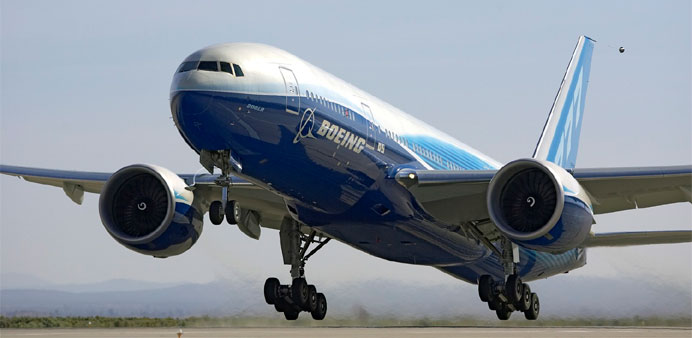Aviation experts noted that confidence in the 777 was increased by the fact that the fuselage remained largely intact after impact and the fire remained at bay until after many passengers had exited, thanks to engineering design and a flame retardant cabin interior that are standard on modern jets. The 777 also has a exceptional safety record that will support confidence in the jet.
Reuters/San Francisco
|
|
The first fatal crash of a Boeing 777 jetliner on Saturday may not pose much of a setback to the company, in part because design features of the plane helped prevent burning and break-up that could have led to greater loss of life, experts said.
So far, there were no indications of mechanical failure aboard Asiana Airlines flight 214 before it touched down short of the runway in San Francisco, skidded across the tarmac and erupted in flames, killing two passengers and injuring more than 180 people.
National Transportation Safety Board Chairwoman Deborah Hersman said on Sunday that it was too early to say whether pilot error or mechanical failure were to blame. But she said there was no evidence of problems with the flight or the landing until 7 seconds before impact, when the crew tried to increase the plane’s speed and the plane responded normally. The control tower was not alerted to any plane issues.
Aviation experts noted that confidence in the plane was increased by the fact that the fuselage remained largely intact after impact and the fire remained at bay until after many passengers had exited, thanks to engineering design and a flame retardant cabin interior that are standard on modern jets. The 777 also has a exceptional safety record that will support confidence in the jet.
“This, to me, is actually more of a story about tremendous safety,” said Richard Aboulafia, an aerospace analyst at the Teal Group in Virginia. “You have this cataclysmic-looking crash where the overwhelming majority of people walk away. This is a very safe plane.”
Hospitals were surprised that there were not more burn victims. “We were expecting burns, we did not see them,” said Dr Margaret Knudson, chief of surgery at San Francisco General Hospital, which received the most patients of any hospital.
The accident came as Boeing Co is battling to sell a new 777 version to customers to compete with a rival A350 plane from Airbus. Earlier this year, Boeing’s 787 Dreamliner was grounded by regulators after batteries overheated on two jets, raising safety concerns about that jet and prompting an overhaul of battery design.
Hours after the accident, the first airliner crash in the US since 2009, Asiana Airlines president and CEO Yoon Young-doo said the plane did not appear to be at fault.
“For now, we acknowledge that there were no problems caused by the 777-200 plane or (its) engines,” Yoon told reporters at the company headquarters on the outskirts of Seoul.
“Investors will not view this negatively for the 777,” said Ken Herbert, an analyst at Imperial Capital in San Francisco. “I do not think it will have any lasting impact on what has otherwise been a stellar record for the 777.”
Boeing shares closed at $104.20 on Friday. The shares have gained about 38% so far this year.
Still, the two deaths on Saturday mar the unblemished safety record for one of Boeing’s flagship jetliners and a solid workhorse of the industry, which has flown since 1995 without a fatal crash.
In January 2008, all passengers and crew survived when a similar British Airways 777-200ER crash-landed yards short of the runway at London’s Heathrow Airport.
A two-year investigation blamed the crash on a fuel blockage caused by the release of ice that had built up during the long flight from Beijing. The discovery led to changes in the design of the British Rolls-Royce engines used on some 777s.
The Asiana plane that crashed on Saturday was powered by engines from Pratt & Whitney, a subsidiary of United Technologies Corp.
“I am sure the investigators will look at operational error as a possibility and want to know how much experience this crew had with hand flying the aircraft rather than depending on the computer to take them to touch down,” said Jim Hall, a former head of the National Transportation Safety Board.



